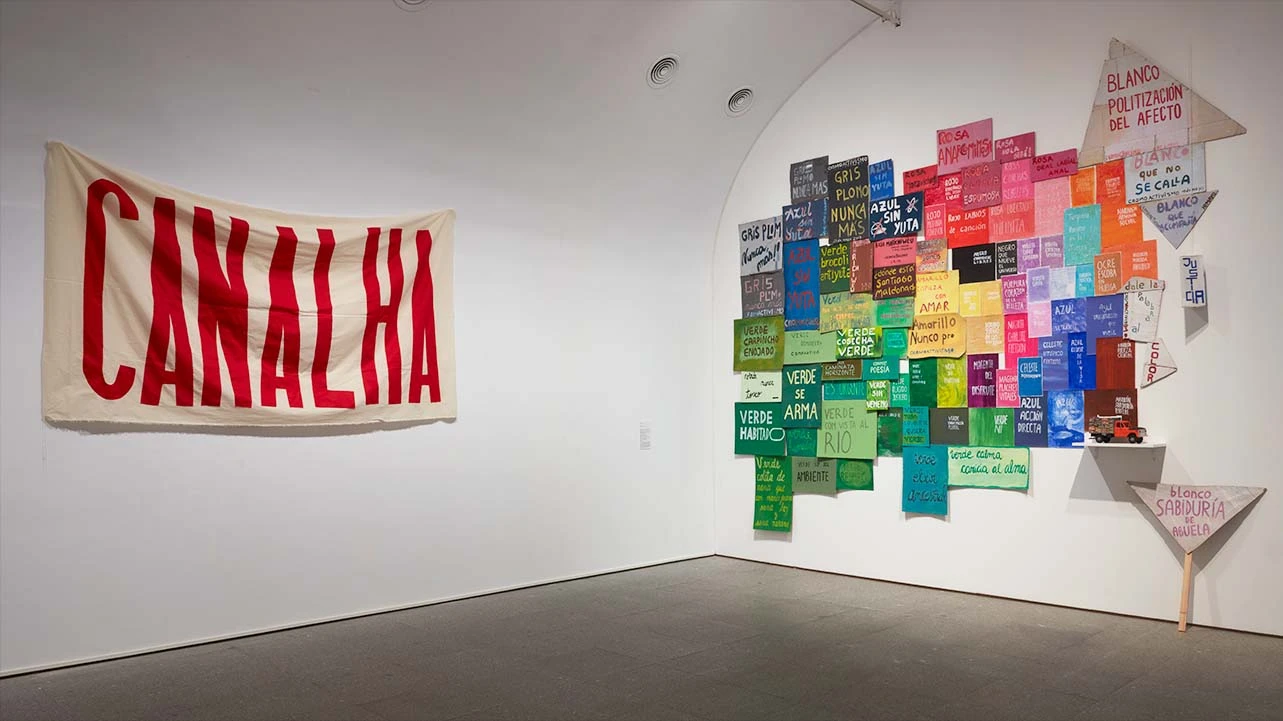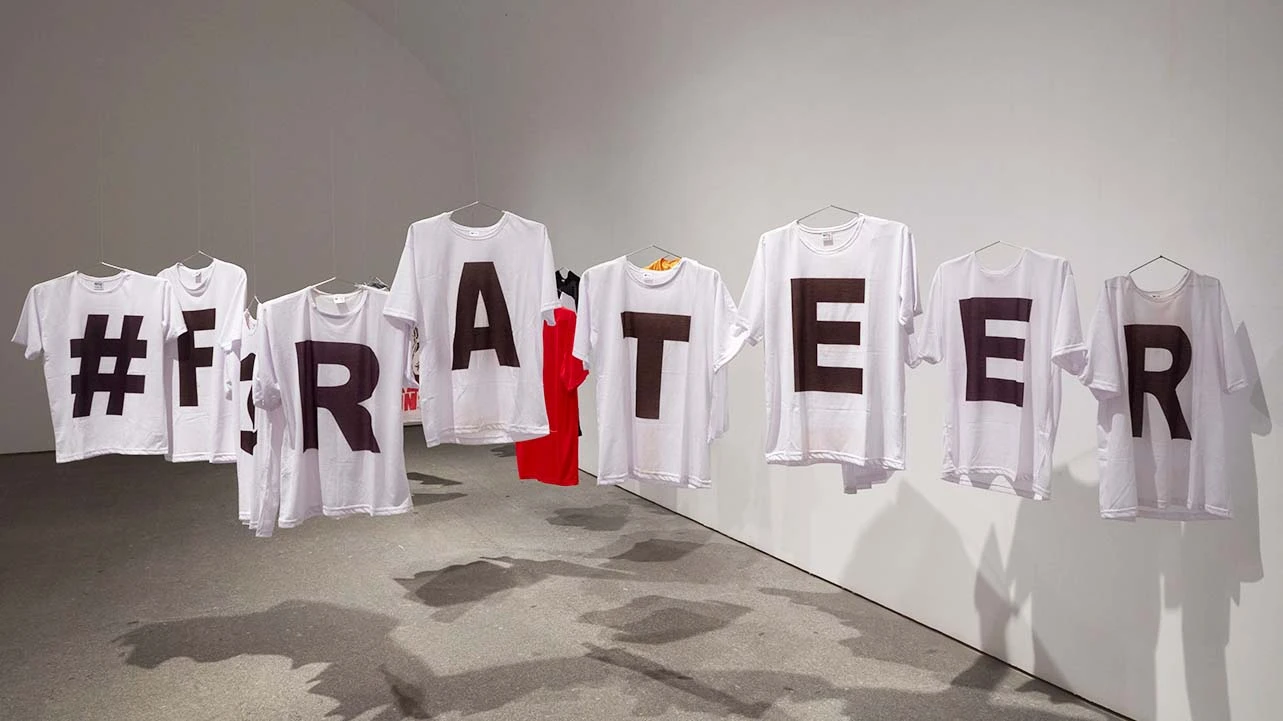Graphic Turn
Like the Ivy on the Wall
Graphic Turn. Like the Ivy on a Wall is the outcome of a long collective research process conducted by the Southern Conceptualisms Network, in collaboration with the Museo Reina Sofía. The exhibition puts forward a survey of graphic art initiatives which have, from the 1960s to the present day, confronted urgent, politically oppressive contexts in Latin America, articulating strategies of transformation and resistance that radically changed approaches and actions and the way in which they established intersubjective links, built communities, and even circulated graphic supports.
With the aim of exploring how these collective processes granted visibility to different social demands, the exhibition brings together a broad selection of these materials and slogans, quickly and efficiently circulated outside the field of art and from different origins and geographical coordinates, which share precarious components and mediums and the same graphic potential and distribution, activating them as revolutionary wake-up calls. Thus, indigenous rights movements, memory struggles for victims of dictatorships in Chile, Argentina, Peru and Uruguay, and queer activism and feminisms cross over and rise up as the producers of these posters and banners, T-shirts, interventions in urban space, and street performances and actions, comprising a complex set of experiences encompassing ties to solidarity, affinity and influence among the different countries under discussion. Consequently, the exhibition understands notions of graphic art in an expanded sense and the idea of “turn” as an uprising, a challenge to power, reverting that which is a given. From conversational, advisory and deliberative spaces, it explores the links between art and politics driven by collectives — AIDA, Alvorada, Cromoactivismo, Fugitivas del Desierto, Iconoclasistas, La Voz de la Mujer, among others — and artists, sometimes renowned, like Julio Le Parc and Luis Felipe Noé, and sometimes anonymous, in an unwavering demonstration of mass protest.
The results of this line of collaborative research were previously shown in the exhibition Losing the Human Form. A Seismic Image of the 1980s in Latin America, held from 26 October 2012 to 11 March 2013, and in the workshop series that was part of the 2020 programme Graphic Bursts in the Museo Reina Sofía.
On this occasion, the case studies analysed, inside and outside the Americas, are proof of the wide array of graphic action tools which connect modes of protest and dissidence internationally. Currently under way or recent, these processes look towards other movements from preceding decades from which they have drawn as though they were interconnected episodes. A dialogue that seeks to find not only coincidences and affinities between historical cycles, but also tensions, latencies and transformations in graphic art practices.
Opposite avant-garde graphic art materials associated with the socialisation of art, the present renders an account of the redefinition of graphic art from political practice by dint of strategies of agency that span its insertion in ideological circuits, the creation of counter-hegemonic and decolonial narratives, the transformation of public space, the use of different temporalities — the immediacy of street protests and the protracted time in developing fabric or stitching — as well as its capacity to give rise to communities of collective resistance that cross geopolitical, social and institutional borders.
Like the Ivy on a Wall references a verse from the song “Volver a los diecisiete” (“Being Seventeen Again”) by singer-songwriter Violeta Parra, a source of inspiration for this research. Graphic art grows on walls and, like ivy, continually puts out shoots because, in this cyclical time, things did not happen simply in the past but continue to happen, and with the ability to cross through and evoke strong feelings.
Curator
Southern Conceptualisms Network
Coordinating team of the Southern Conceptualisms Network
Ana Longoni (Argentina), Tamara Díaz (Cuba), André Mesquita (Brazil), Guillermina Mongan (Argentina) and Sylvia Suárez (Colombia)
Researchers
Lucía Cañada, Fernanda Carvajal, Fernando Davis, Guillermina Mongan and Juan Pablo Pérez (Argentina); Clara Albinati, María Angélica Melendi and André Mesquita (Brazil); Nicole Cristi, Javiera Manzi and Paulina Varas (Chile); Tamara Díaz and Suset Sánchez (Cuba); Oscura Díaz and Sylvia Suárez (Colombia); Jesús Barraza and Josh MacPhee (USA); Carlos Henríquez Consalvi (El Salvador); Sol Henaro, Cristina Hijar, Elva Peniche and Annabela Tournon (Mexico); Damián Cabrera (Paraguay); Moira Cristiá (Paris); Rodrigo Quijano and Rosanna del Solar (Peru); Miguel Piccini (Dominican Republic), and Sebastián Alonso, Fernando Miranda, Gabriel Peluffo and Gonzalo Vicci (Uruguay).
Touring venues
Museo Universitario Arte Contemporáneo de la Universidad Nacional Autónoma de México (MUAC), Mexico City (November, 2022 – July, 2023)
With the support of
Embassy of the Argentine Republic
Organised by
Museo Reina Sofía
Additional material
Image gallery







